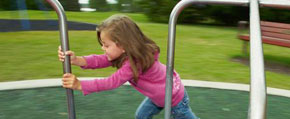We are pleased to announce an exciting new alliance between Active Living Research and GP RED to co-host and coordinate...
Do Americans Want Walkable Communities? Evidence from a National Survey
Presentation at the 2006 Active Living Research Annual Conference
Background
Research shows significant and consistent associations between amount of walking and characteristics of the built environment such as sidewalks and proximity to destinations. As a result, availability of walkable communities has been identified as a public health issue. A growing number of cities have adopted policies that encourage or require such features. But such efforts are unlikely to have an appreciable effect on public health problems unless the public shows widespread support for the adoption of such policies and expresses significant interest in moving into these communities.
Objectives
The objectives of this study were to:
- Analyze levels of support for and desire to live in a walkable community.
- Identify factors associated with support for and desire to live in a walkable community.
- Examine perceived qualities of walkable communities associated with support for and personal importance of qualities of walkable communities associated with desire.
Methods
This study uses data from a May 2003 survey of U.S. adults conducted by Porter Novelli, a public relations company. A total of 10,000 questionnaires were mailed to a nationally representative sample of U.S. households that belong to a consumer opinion panel run by Synovate, a market research firm. In the survey, respondents read a description of a proposed “town design” that included characteristics such as a town center, transit access, a variety of housing types, smaller lots, narrower streets with sidewalks and trees, a network of parks and trails and open space preserved for farmlands and forests. They were then asked how much they would support the development of communities like this in their area (“support”), and how much they would want to live in one if communities like this were available in their area (“desire”). For both variables, we first estimated linear regression models with socio-demographic characteristics only. We then estimated separate models for each set of independent variables, after entering socio-demographic characteristics. Independent variables were grouped by health orientation, environmental attitudes, leisure orientation, political attitudes and location.
Results and Conclusions
This national sample of adults expressed strong support for and desire to live in walkable communities. Over 43 percent said they would support the development of such communities, while another third said “maybe” and less than a quarter said they would not. The results were nearly identical for desire to live in communities designed this way. Respondents who were younger, more educated, renters, non-white, who cared more about the environment, cared more about their health and have a more urban leisure orientation, support walkable communities more strongly and expressed more desire to live in these communities than others. But support for and desire to live in these communities was high on average across nearly all population subgroups. Only rural residents were on average unsupportive and uninterested in communities designed this way.
Perceived qualities of walkable communities were also strong predictors of support, particularly perceived benefits with respect to environment/commute, kid-friendly and space. However, the greater the walking qualities that individuals perceived, the lower their support for walkable communities. These results suggest that support for walkable communities derives more from a concern over sprawl than a concern for public health. Similarly, personal importance of qualities of walkable communities were strong predictors of desire, particularly qualities related to environment, walking, kid-friendliness, space and commuting. The personal importance of kid-friendly qualities explains the largest share of variation, suggesting that possible benefits for children of walkable communities are their biggest draw.
These results demonstrate a substantial interest on the part of the general public in community designs that support walking to shopping, transit and other uses. It appears that a majority of Americans are willing to support the adoption of policies that promote walkable communities and are at least willing to consider living in such places. It was particularly surprising that urban and suburban residents expressed similar levels of support for and desire to live in walkable communities, suggesting that many suburbanites would live in walkable communities if they were available. What remains to be seen is whether this interest will lead cities to adopt new development policies, private developers to respond with new kinds of products, households to move to these developments or the members of those households to walk more. However, because support for walkable communities is so widely distributed throughout the population and is not strongly related to political beliefs, policies that promote walkable communities appear to be a unifying issue.
Support
This project was supported through a grant from the Robert Wood Johnson Foundation Active Living Research program.
- DOWNLOAD "2006_community_design_buildings_concurrent_session_handy.pdf" PDF (0.03 MB) Presentations
STAY UP TO DATE
RECENTLY ADDED TOOLS & RESOURCES
MOVE! A BLOG ABOUT ACTIVE LIVING
The "Active Living Conference" aims to break down research and practice silos and...







